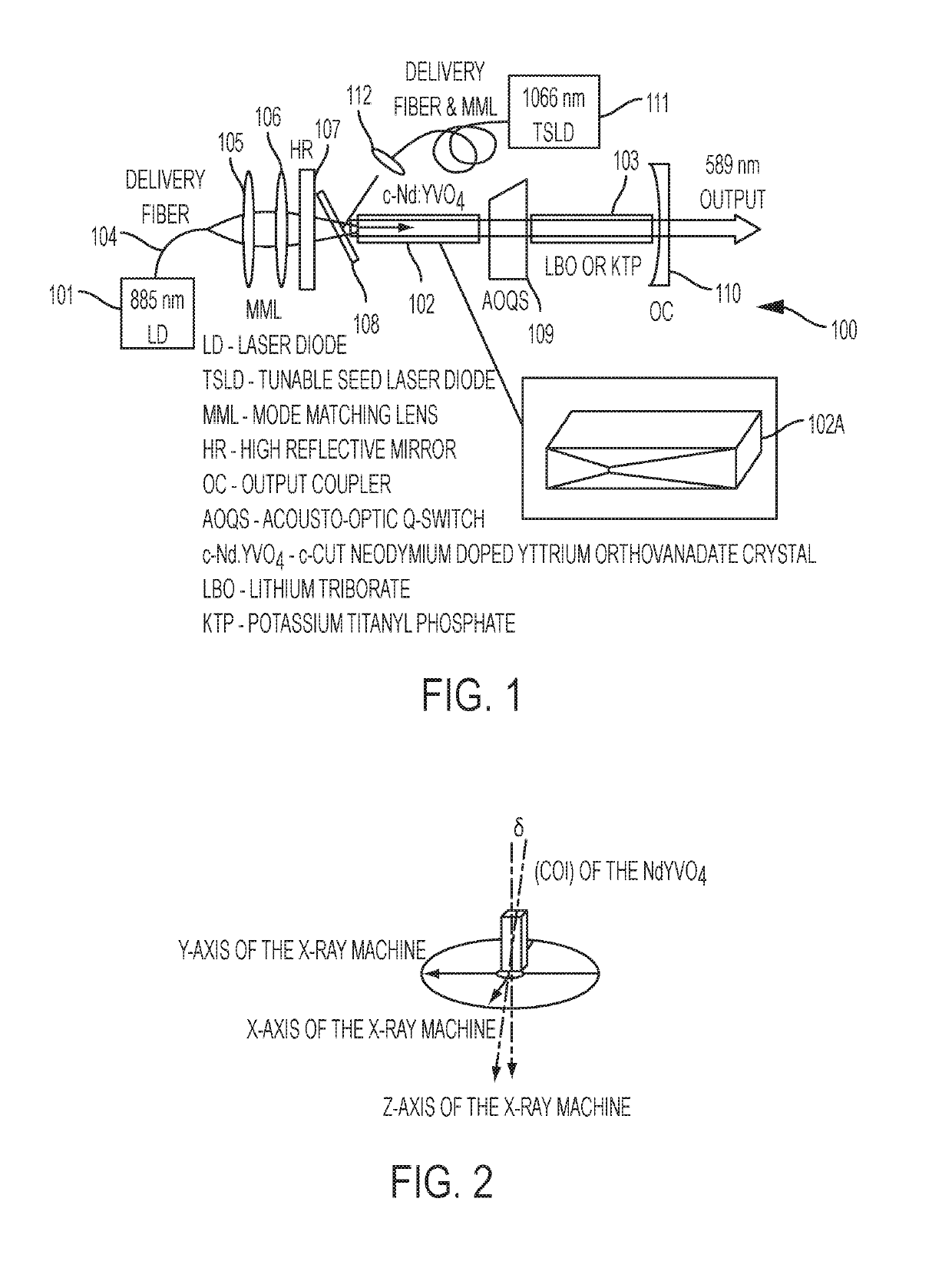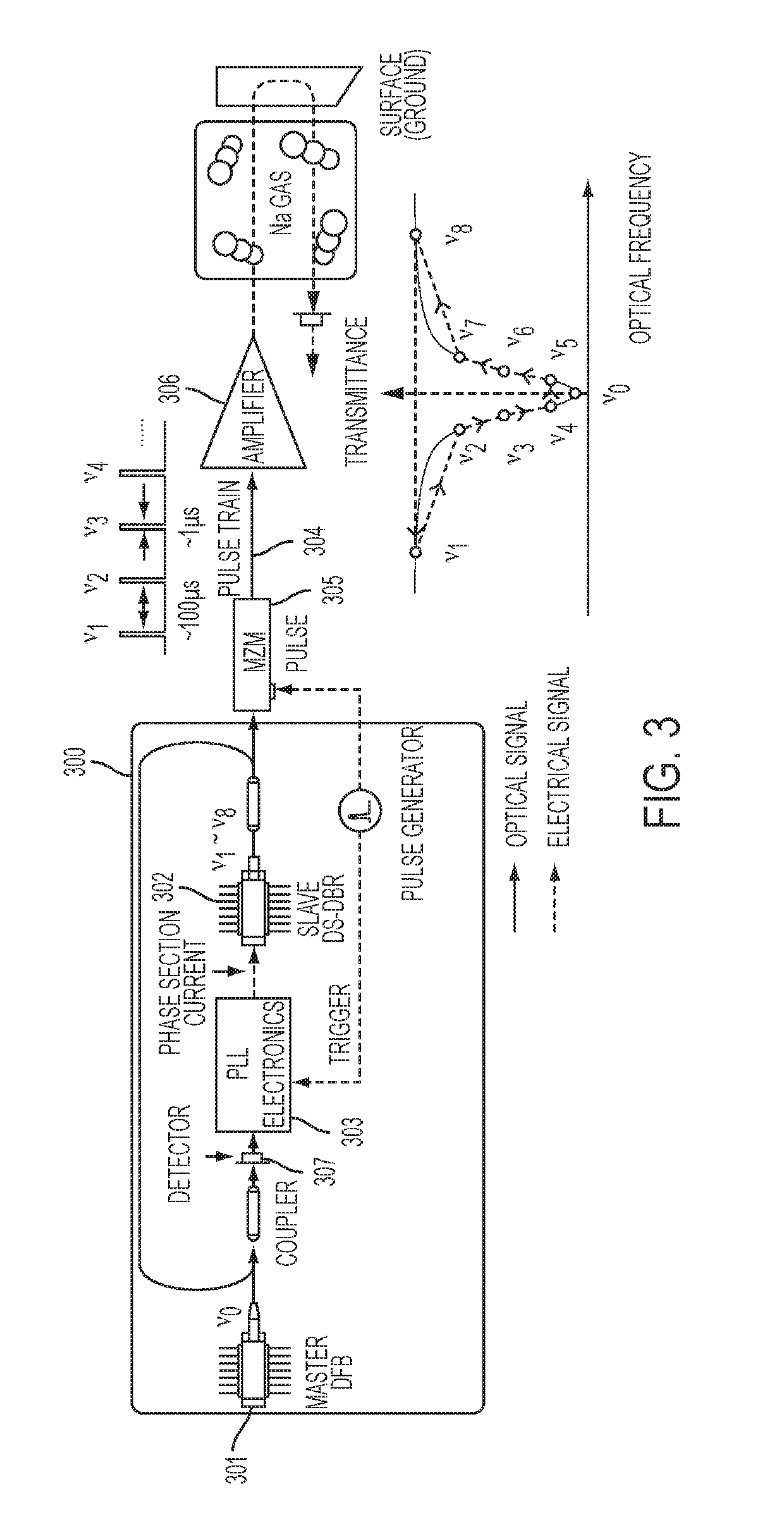Space-based sodium Lidar instrument and method of operation
a lidar instrument and space-based technology, applied in the field of lidar instruments, can solve the problems of not having the information required for the fundamental characterization of how the basic state is established and maintained, unable to predict the impact of atmospheric chemistry and dynamics, and no method or instrument to measure these dynamics, etc., to achieve efficient cooling and thermal management
- Summary
- Abstract
- Description
- Claims
- Application Information
AI Technical Summary
Benefits of technology
Problems solved by technology
Method used
Image
Examples
Embodiment Construction
[0038]The present invention relates to a space-borne remote sensing technique that enables the acquisition of global sodium (Na) density, temperature, and wind measurements in the mesospheric and lower thermosphere (MLT), with the spatial and temporal resolution required to resolve issues associated with the structure, chemistry, dynamics, and energetics of the MLT region. In one embodiment, the present invention relates to a Lidar instrument including a laser transmitter to remotely measure the Na layer and the composition and dynamics of Earth's mesosphere.
[0039]In one embodiment, the present invention is related to a laser transmitter that is capable of global high-resolution measurements of the Na layer using resonance fluorescence Lidar, which will permit, not only measurements of zonal mean structures, planetary waves and tides, but also uniquely characterize the global distribution of gravity waves (GWs). Such measuring capabilities will enable more accurate constraints of gl...
PUM
| Property | Measurement | Unit |
|---|---|---|
| wavelength | aaaaa | aaaaa |
| wavelength | aaaaa | aaaaa |
| wavelength | aaaaa | aaaaa |
Abstract
Description
Claims
Application Information
 Login to View More
Login to View More - R&D
- Intellectual Property
- Life Sciences
- Materials
- Tech Scout
- Unparalleled Data Quality
- Higher Quality Content
- 60% Fewer Hallucinations
Browse by: Latest US Patents, China's latest patents, Technical Efficacy Thesaurus, Application Domain, Technology Topic, Popular Technical Reports.
© 2025 PatSnap. All rights reserved.Legal|Privacy policy|Modern Slavery Act Transparency Statement|Sitemap|About US| Contact US: help@patsnap.com


